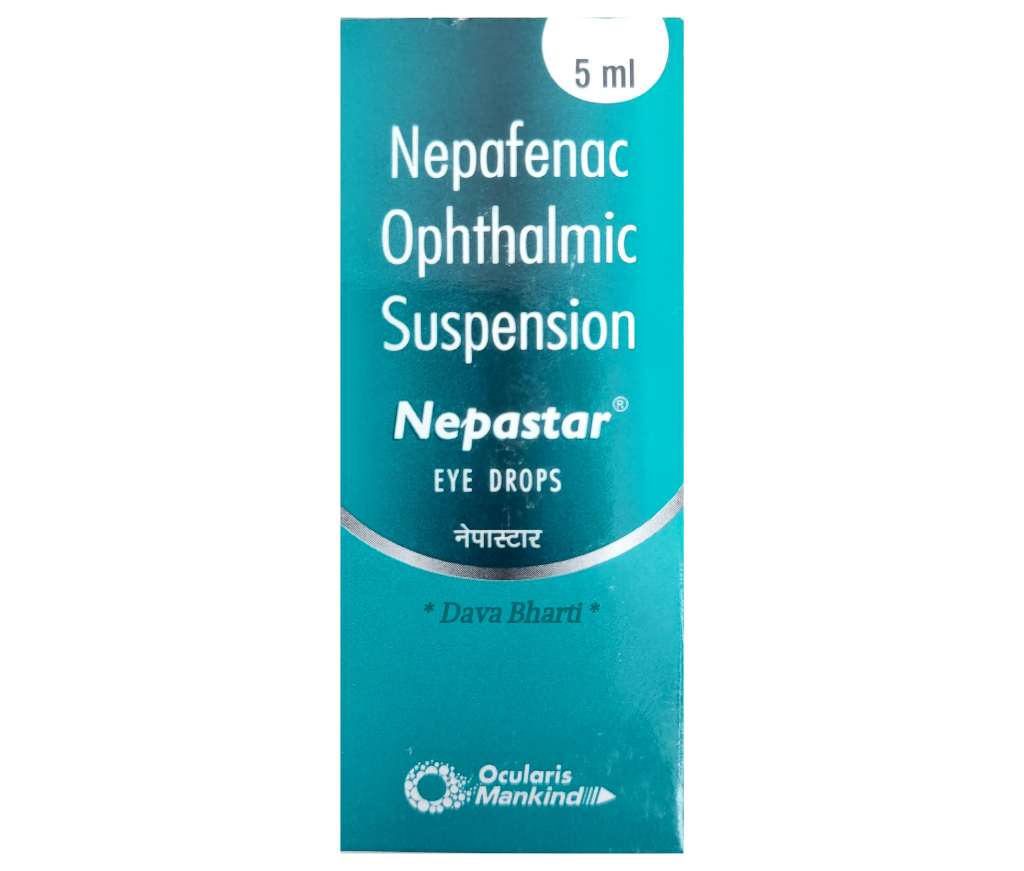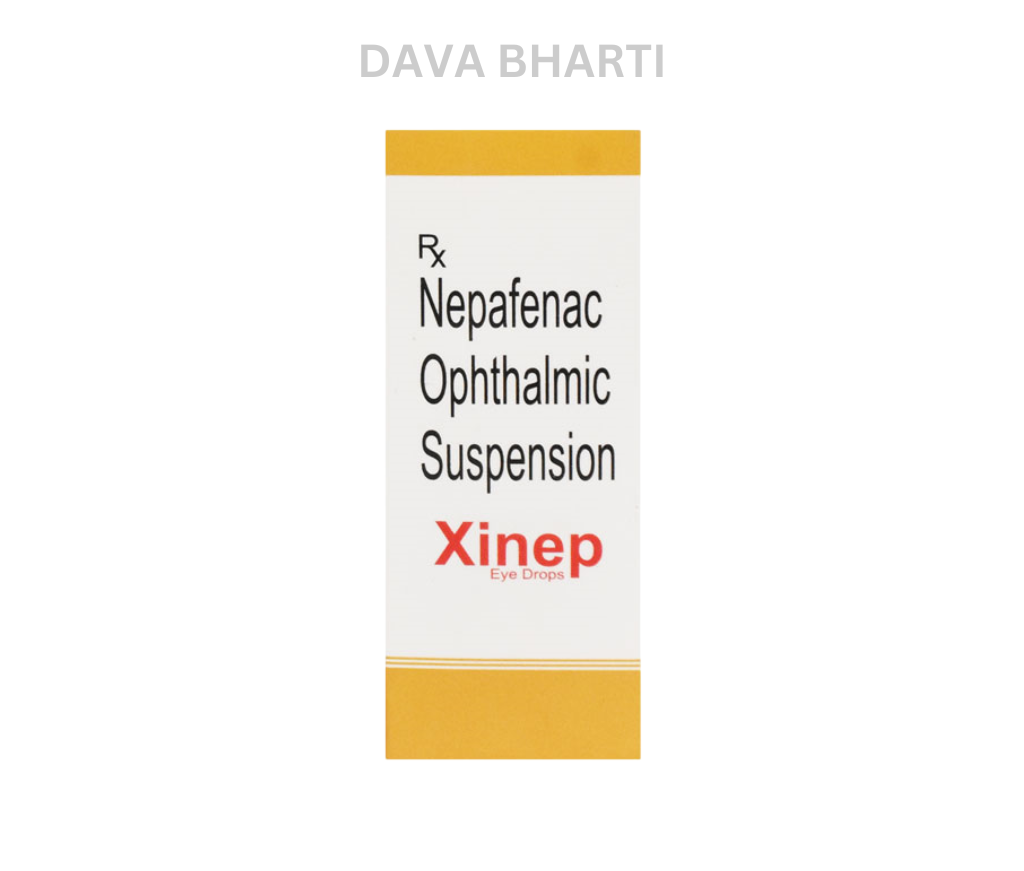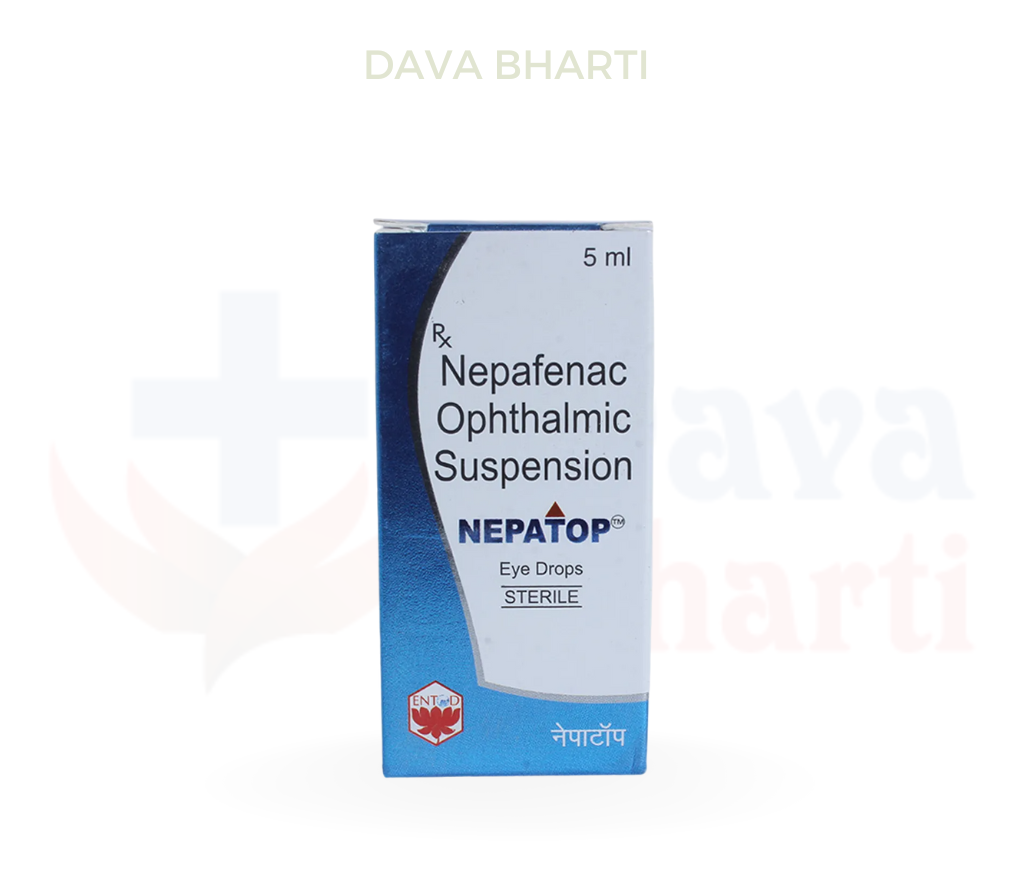Nepacin Eye Drop
![]() Item requires a valid prescription
Item requires a valid prescription
Manufactured By : Optho Remedies Pvt Ltd
Composition : Nepafenac (0.1%)
Rs 140.80
MRP Rs 176.00
(20% OFF)
Includes all taxes
Package SIZE
( 5 ml in 1 bottle )
100% Authentic
Products
Free
Shipping*
Product
Returnable
Sylate T 500mg/250mg Tablet is a combination medicine used in the treatment of heavy menstrual bleeding. It works by preventing the breakdown of blood clots and controls excessive bleeding. It also increases the ability of platelets to stick together and form blood clots.
You can take Sylate T 500mg/250mg Tablet at any time of day, with or without food, but it is best to take it at the same time each day. Keep taking it for as long as advised by your doctor. Take this medicine in the dose and duration advised by the doctor and if you have missed a dose, take it as soon as you remember. Remember to finish the full course of treatment even if you feel better. It is important that this medication is not stopped suddenly without talking to the doctor.
The most common side effects of this medicine include nausea, stomach pain, headache, nasal congestion, sinus pain, sinus inflammation, rash, tiredness, and musculoskeletal (bone, muscle or joint) pain. It may also cause diarrhea, so it is better to take plenty of fluids while taking this medicine as it may help to prevent dehydration. It is advised to consult with your doctor if you do not notice any changes in periods after 3 consecutive periods.
Before taking it, let your doctor know if you have any kidney problems or vaginal bleeding disorder. Pregnant or breastfeeding women should also consult their doctor for advice before taking this medicine. You also need to tell your doctor what other medicines you are taking. You might be asked for eye check-ups while taking this medicine.
- Uses / Indications: Nepacin Eye Drop is used in eye pain. It is used to prevent and treat inflammation and associated symptoms following eye surgery.
No interaction found
- Pregnancy interaction:
- Nepacin Eye Drop may be unsafe to use during pregnancy.Animal studies have shown adverse effects on the foetus, however, there are limited human studies. The benefits from use in pregnant women may be acceptable despite the risk. Please consult your doctor.
- Expert advice:
- Your doctor has prescribed Nepacin for the relief of post-operative eye pain and inflammation (redness and swelling). Apply pressure on the corner of the eye (close to the nose) for about 1 minute, immediately after instilling the drop. Usually, a 4 to 6-week course may be necessary. Wait for at least 5-10 minutes before delivering the next medication in the same eye to avoid dilution. Stinging sensation may occur for 1-2 mins. Notify your doctor if it persists for longer. Notify your doctor if you are on blood thinners or have bleeding problems. Use the eye drops within 4 weeks of opening the bottle.
- How to use:
- This medicine is for external use only.Take it in the dose and duration as advised by your doctor. Check the label for directions before use. Hold the dropper close to the eye/ear without touching it. Gently squeeze the dropper and place the medicine inside the lower eyelid or ear. Wipe off extra liquid.
- How it works:
- Nepacin Eye Drop is a non-steroidal anti-inflammatory drug (NSAID). It works by stopping the release of certain natural substances in the eye that are responsible for pain and inflammation (redness and swelling).
- Faq for medicine:
- What is Nepacin ophthalmic suspension used for? : Nepacin ophthalmic suspension is used to prevent and treat redness, pain and swelling that occurs after cataract surgery and to reduce the risk of postoperative macular edema (swelling of a layer present at the back of the eye) associated with cataract surgery in diabetic patients|What is Nepacin ophthalmic suspension? : Nepacin ophthalmic suspension is a solution containing pain-relieving and anti-inflammatory medication Nepacin for use as eye drops to prevent and treat redness, pain and swelling that occurs after cataract surgery and to reduce the risk of postoperative macular edema (swelling of a layer present at the back of the eye) associated with cataract surgery in diabetic patients.





